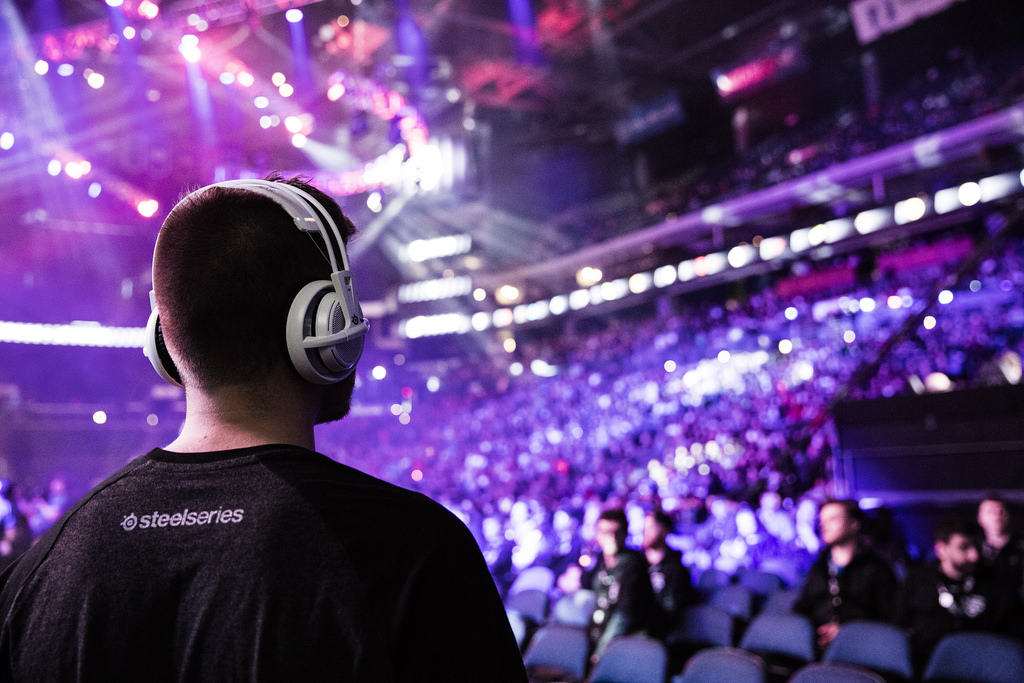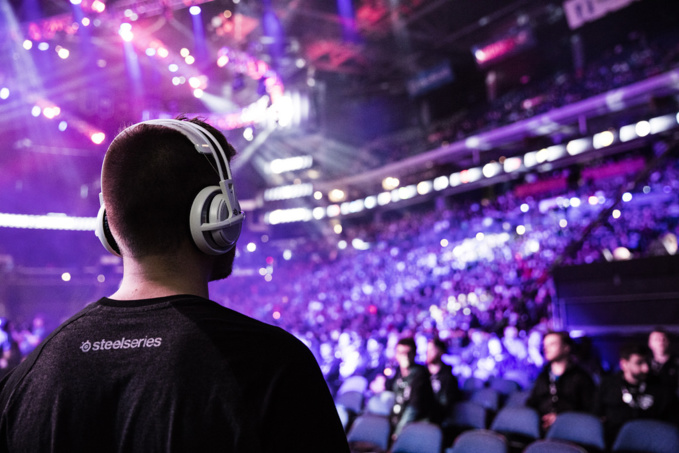Now interest in the topic is fueled by recent competition in Dota 2 between Elon Musk’s AI and human players. Yet, the symbiosis of games and artificial intelligence began much earlier.
Most of today's youth first encountered AI not in universities or business conferences, but much earlier, when they started playing computer games. Many gamers met bots in Counter Strike (the game was released in 2000). There, bots were used to replace real online opponents in offline mode, because the fast internet was then far from being everywhere. It is these games that laid the foundation for common perception of AI and replacement of people with machines.
Since then, the attitude towards games has changed dramatically. At first, they were the domain of schoolchildren and relatively small groups of amateurs. Now, according to Newzoo research, there are already more than 2.2 billion active gamers in the world, of which about 1 billion people spend real money to buy games and related content. To compare, the World Bank reports that 3.5 billion people worldwide earn money (working population).
The parallel development of games and artificial intelligence is rapidly changing markets, creating new business niches. How do large corporations and venture investors plan to earn on this?
Among the technological giants, this vision is best combined with the strategy of Amazon. As the leader in supply of the related content, it takes 28% of the volume of American e-commerce and is involved into the entertainment sphere, from distribution (Amazon Video) to production of classical media content (Amazon Studios).
The potential of games as mass immersion theaters became apparent back in 2014. Then, Amazon began actively buying startups for the new ecosystem: developer Double Helix Games (now Amazon Game Studios, 2014), Twitch streaming service (bought for $ 970 million, 2014), eSports agency GoodGame (2014), Сurse portal (2016) and GameSparks server platform (2017). Already now, it is possible to develop a game, place it in the cloud, monetize and broadcast, without going beyond the Amazon infrastructure.
So far, only Microsoft can become a serious competition to Amazon. The company entered the gaming industry back in 2001 with its Xbox console and has its own cloud platform Azure. In recent years, MIcrosoft has acquired the developer of the legendary game Minecraft ($ 2.5 billion, 2014), the game engine Havok (2015), the streaming service Beam (2016), 3D games technology Simplygon (2017) and the server platform Playfab (competitor to GameSparks, 2018). Microsoft CEO Satya Nadella keep focusing on overcoming the $ 100 billion game market.
Traditional venture investors and local corporations are also interested in this growing market. Unlike traditional sports, online games collect huge data massive about the players' actions. This opens new opportunities in the field of machine learning analysis. Therefore, one of the hottest niches in e-sports was analytical and educational applications, which attracted both serial entrepreneurs and venture investors.
The niche’s pioneer in 2016 was the German startup Dojo Madness, created by industry veteran Jens Hilgers and using analytics of large data to train players. Since then, he has acquired several competitors: the venture fund Almaz Capital has invested in Mobalytics service for players, and in 2018 Runa Capital together with Sistema VC and French Ventech supported Gosu.ai.
The eSports betting market is another fast-growing niche for venture capital investment. On the one hand, often the amount of betting on sports exceeds the market itself (for example, in 2016 NFL generated a market of $ 13 billion at a rate of about $ 50 billion), so the potential volume of eSports rates can be estimated no lower than the volume of the e-sports market - $ 695 million in 2017 (+ 41% for the year). On the other hand, if the most popular sport in the world, football, with 3.5 billion spectators attracts bets at $ 500-700 billion a year, why wouldn’t eSports with 385 million current viewers at least $ 50 billion in the future?
The inflow of investment money into similar niches will allow applying machine learning algorithms to new huge data sets, quickly receiving feedback and, therefore, further improving AI. This knowledge of AI will help to automate other sectors of the economy and thereby eventually increase the number of gamers. And then the circle will close.
source: forbes.com
Most of today's youth first encountered AI not in universities or business conferences, but much earlier, when they started playing computer games. Many gamers met bots in Counter Strike (the game was released in 2000). There, bots were used to replace real online opponents in offline mode, because the fast internet was then far from being everywhere. It is these games that laid the foundation for common perception of AI and replacement of people with machines.
Since then, the attitude towards games has changed dramatically. At first, they were the domain of schoolchildren and relatively small groups of amateurs. Now, according to Newzoo research, there are already more than 2.2 billion active gamers in the world, of which about 1 billion people spend real money to buy games and related content. To compare, the World Bank reports that 3.5 billion people worldwide earn money (working population).
The parallel development of games and artificial intelligence is rapidly changing markets, creating new business niches. How do large corporations and venture investors plan to earn on this?
Among the technological giants, this vision is best combined with the strategy of Amazon. As the leader in supply of the related content, it takes 28% of the volume of American e-commerce and is involved into the entertainment sphere, from distribution (Amazon Video) to production of classical media content (Amazon Studios).
The potential of games as mass immersion theaters became apparent back in 2014. Then, Amazon began actively buying startups for the new ecosystem: developer Double Helix Games (now Amazon Game Studios, 2014), Twitch streaming service (bought for $ 970 million, 2014), eSports agency GoodGame (2014), Сurse portal (2016) and GameSparks server platform (2017). Already now, it is possible to develop a game, place it in the cloud, monetize and broadcast, without going beyond the Amazon infrastructure.
So far, only Microsoft can become a serious competition to Amazon. The company entered the gaming industry back in 2001 with its Xbox console and has its own cloud platform Azure. In recent years, MIcrosoft has acquired the developer of the legendary game Minecraft ($ 2.5 billion, 2014), the game engine Havok (2015), the streaming service Beam (2016), 3D games technology Simplygon (2017) and the server platform Playfab (competitor to GameSparks, 2018). Microsoft CEO Satya Nadella keep focusing on overcoming the $ 100 billion game market.
Traditional venture investors and local corporations are also interested in this growing market. Unlike traditional sports, online games collect huge data massive about the players' actions. This opens new opportunities in the field of machine learning analysis. Therefore, one of the hottest niches in e-sports was analytical and educational applications, which attracted both serial entrepreneurs and venture investors.
The niche’s pioneer in 2016 was the German startup Dojo Madness, created by industry veteran Jens Hilgers and using analytics of large data to train players. Since then, he has acquired several competitors: the venture fund Almaz Capital has invested in Mobalytics service for players, and in 2018 Runa Capital together with Sistema VC and French Ventech supported Gosu.ai.
The eSports betting market is another fast-growing niche for venture capital investment. On the one hand, often the amount of betting on sports exceeds the market itself (for example, in 2016 NFL generated a market of $ 13 billion at a rate of about $ 50 billion), so the potential volume of eSports rates can be estimated no lower than the volume of the e-sports market - $ 695 million in 2017 (+ 41% for the year). On the other hand, if the most popular sport in the world, football, with 3.5 billion spectators attracts bets at $ 500-700 billion a year, why wouldn’t eSports with 385 million current viewers at least $ 50 billion in the future?
The inflow of investment money into similar niches will allow applying machine learning algorithms to new huge data sets, quickly receiving feedback and, therefore, further improving AI. This knowledge of AI will help to automate other sectors of the economy and thereby eventually increase the number of gamers. And then the circle will close.
source: forbes.com



















